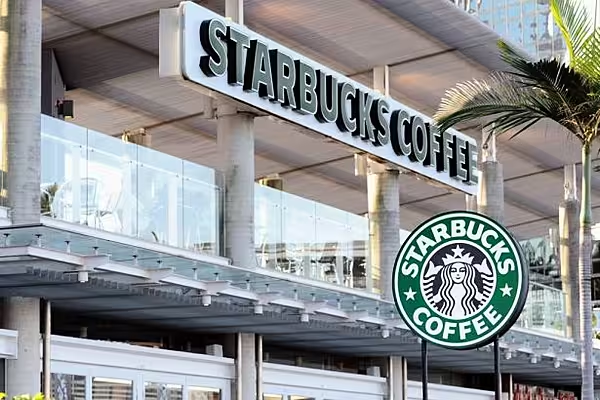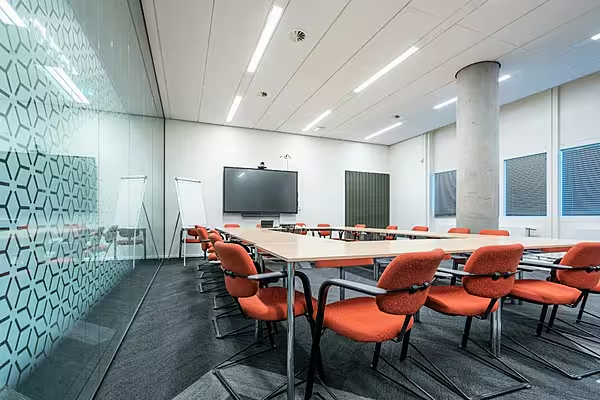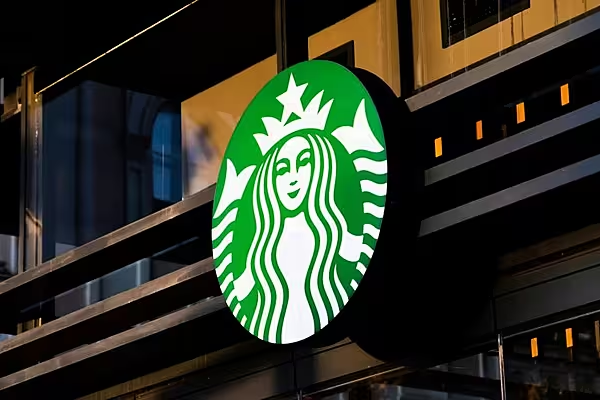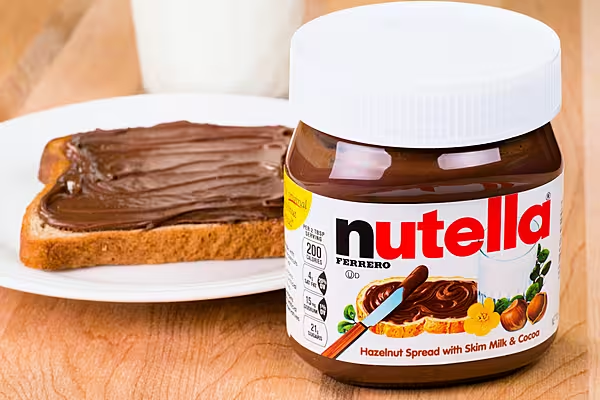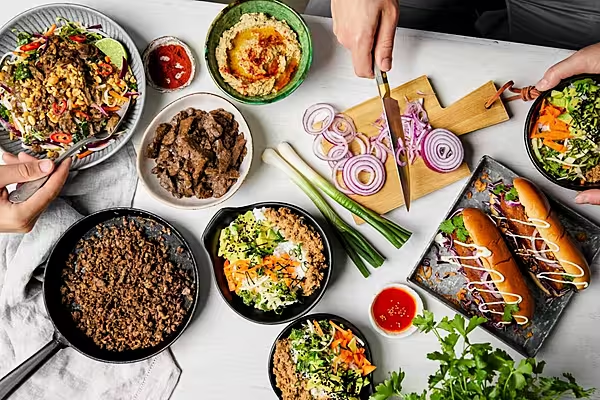Starbucks Corp. posted earnings that topped analysts’ estimates as new food items and digital efforts like mobile ordering helped its U.S. business defy a restaurant-industry slowdown.
Profit rose to 56 cents a share, excluding some items, in the most recent quarter. That topped analysts’ average prediction of 55 cents.
The world’s largest coffee-shop operator has been fueling sales with technology that speeds service at cafes. Starbucks last year began offering mobile order and pay at its U.S. locations and is expanding that feature to markets abroad, including China. The company also has focused on widening and improving its food selection, getting customers to spend more money per visit. Same-store sales rose 5 percent in the Americas region, matching the average estimate of analysts polled by Consensus Metrix.
“Food continues to be a big contributor for both traffic and ticket” in the U.S., Chief Financial Officer Scott Maw said in an interview. New drinks, such as coconut milk mocha macchiatos and cold-brew beverages, fueled sales in the quarter, too, he said.
The company also is funneling more of its cash back to investors. Starbucks raised its quarterly dividend to 25 cents a share from 20 cents. It will be paid Dec. 2 to shareholders of record as of Nov. 17.
The stock rose 1.3 percent to $52.45 at 4:54 p.m. in late trading in New York. Through Thursday’s close, Starbucks had lost 14 percent this year.
Revenue Gains
Revenue climbed 16 percent to $5.71 billion in Starbucks’s fiscal fourth quarter, which ended Oct. 2, the Seattle-based company said in a statement Thursday. Analysts estimated $5.69 billion, on average.
Mobile payments accounted for 25 percent of domestic transactions, up from 20 percent a year ago, as the company offers new features such as favorite locations and orders, according to Chief Operating Officer Kevin Johnson. Rewards membership also rose from last year.
In the U.S., where Starbucks has about 12,900 cafes, the latte seller is trying to improve the quality and variety of its food. Earlier this year, the company invested in Italian bakery Princi, which sells pastries, pizza and pasta in Europe. In some locations, the company has partnered with local bakers to make fare such as red-velvet cheesecake brownies in Chicago.
International Efforts
Internationally, the company is focused on boosting sales with new locations and enhanced mobile capabilities in China. Starbucks recently promoted Belinda Wong to lead its business in China, where it plans to double its locations to about 5,000 cafes by 2021. Chief Executive Officer Howard Schultz has said Starbucks’ China presence could rival the U.S. over time. Fourth-quarter same-store sales jumped 6 percent in the Asian nation.
Globally, same-store sales rose 4 percent. Analysts had projected 4.8 percent. Sales by that measure increased 1 percent in the China and Asia Pacific unit, and fell 1 percent in Europe, the Middle East and Africa. The Asia figure was pulled down by weakness in Japan, Maw said.
Starbucks is going big with its upscale brand, dubbed Reserve, to attract more sophisticated customers and better compete with regional chains. It plans to open as many as 1,000 Reserve cafes globally that will tout small-lot coffee and Princi food.
News by Bloomberg, edited by ESM. To subscribe to ESM: The European Supermarket Magazine, click here.
